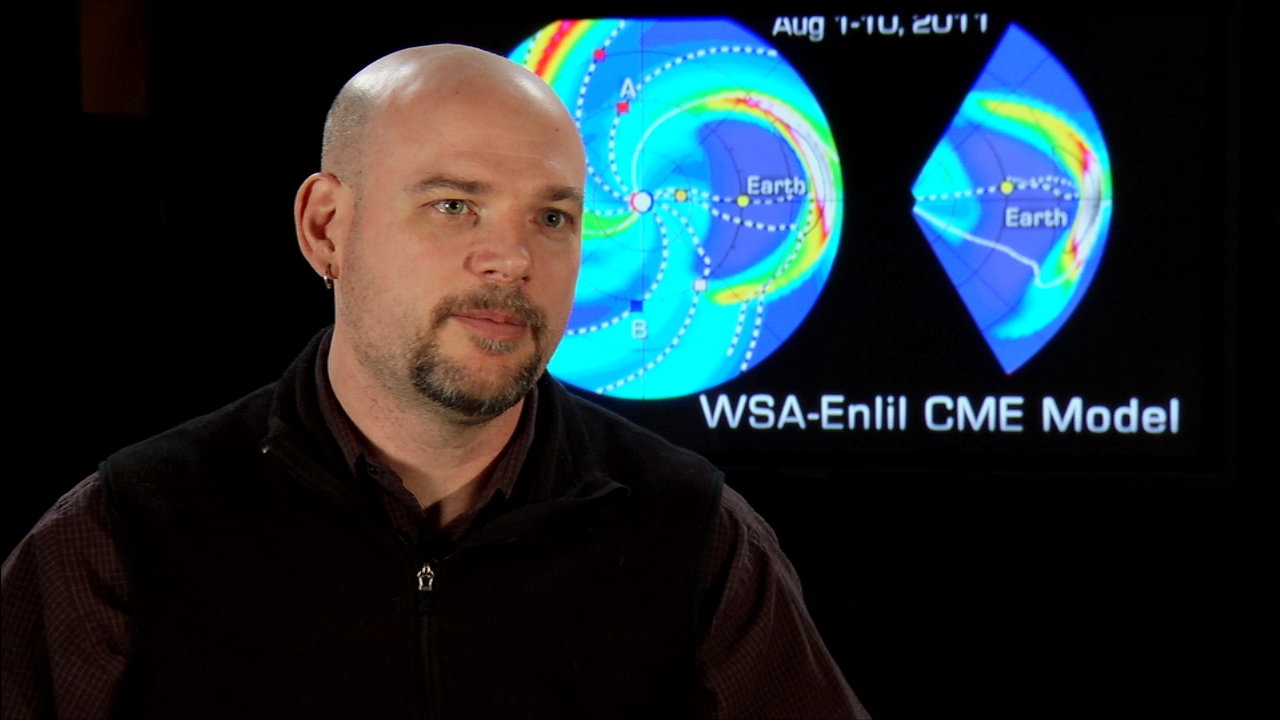Space Weather FAQ Interviews
NASA scientists answer some frequently asked questions about the sun, space weather, and the effects on Earth. Each video is one or more scientists responding to the question above it. The videos are available as ProRes files for broadcast use and have had minor audio equalizing and color correction applied.
The scientists interviewed are:
Dr. Holly Gilbert, NASA Heliophysicist
Dr. Alex Young, NASA Heliophysicist
Dr. Phil Chamberlin, NASA Research Heliophysicist and SDO Deputy Project Scientist
There are also two short videos created with this interview content. They are available here.
Additional responses to these questions are available upon specific request.
For space weather-related footage, animations, and features, visit the Space Weather gallery.
What are solar energetic particles (SEP)?
Phil Chamberlin and Holly Gilbert answer.
For complete transcript, click here.
Do all flares and CMEs hit the Earth?
Alex Young and Phil Chamberlin answer.
For complete transcript, click here.
What happens when a flare or CME reaches the Earth?
Alex Young answers.
For complete transcript, click here.
How long does it take for space weather to reach the Earth?
Alex Young, Holly Gilbert, and Phil Chamberlin answer.
For complete transcript, click here.
How does space weather affect me personally?
Phil Chamberlin answers.
For complete transcript, click here.
What protects us from space weather?
Holly Gilbert and Phil Chamberlin answer.
For complete transcript, click here.
Could a really powerful CME strip off the Earth's magnetic field?
Holly Gilbert answers.
For complete transcript, click here.
Could a really large flare kill people on Earth?
Phil Chamblerlin answers.
For complete transcript, click here.
Why are all the images and video of the sun in strange colors?
Alex Young answers.
For complete transcript, click here.
What causes the Northern Lights (auroras)?
Phil Chamberlin and Holly Gilbert answer.
For complete transcript, click here.
Why is it important to forecast solar events?
Holly Gilbert answers.
For complete transcript, click here.
Why do we use satellites to look at the sun when we can do it from the ground?
Phil Chamberlin answers.
For complete transcript, click here.
Why does NASA need a fleet of spacecraft to study space weather?
Holly Gilbert answers.
For complete transcript, click here.
Credits
Please give credit for this item to:
NASA/Goddard Space Flight Center
-
Video editor
- Scott Wiessinger (USRA)
-
Interviewees
- Holly Gilbert (NASA/GSFC)
- C. Alex Young (ADNET Systems, Inc.)
- Phil Chamberlin (NASA/GSFC)
-
Producers
- Scott Wiessinger (USRA)
- Genna Duberstein (USRA)
-
Project support
- Swarupa Nune (Vantage)
-
Videographer
- Rob Andreoli (Advocates in Manpower Management, Inc.)
Release date
This page was originally published on Tuesday, April 24, 2012.
This page was last updated on Wednesday, May 3, 2023 at 1:53 PM EDT.
Series
This page can be found in the following series:Tapes
The media on this page originally appeared on the following tapes:-
General Heliophysics Space Weather Interviews
(ID: 2012032)
Tuesday, April 24, 2012 at 4:00AM
Produced by - Robert Crippen (NASA)
